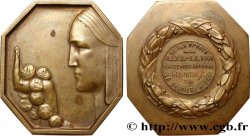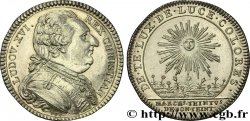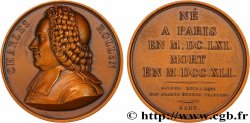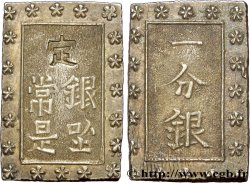fme_774588 - IV REPUBLIC Médaille de tournée de promotion de la Caravelle
120.00 €
Количество
Добавить в корзину

Тип Médaille de tournée de promotion de la Caravelle
Дата: 1957
Монетный двор / Город: Monnaie de Paris
Металл: bronze
Диаметр: 81 mm
Ориентация осей монеты: 12 h.
Гравер JOLY Raymond (1911-2006)
Вес: 192,66 g.
Век: lisse + corne BRONZE
Пуансон: corne BRONZE
Комментарии о состоянии
Patine hétérogène. Exemplaire conservé dans une boîte cartonnée bordeaux
Лицевая сторона
Аверс: легенда: LA CARAVELLE APPORTE AU NOUVEAU MONDE LE MESSAGE DE LA FRANCE PRÉSENTE À L’AUBE DU TRANSPORT À RÉACTION.
Аверс: описание: Avion en vol avec lever de soleil ; un girouette à l’exergue indiquant le 18 avril 1957 et le 25 juin 1957. Signé : R. JOLY.
Обратная сторона
Реверс: легенда: LISTE DES VILLES ÉTAPES DE LA CARAVELLE.
Реверс: Описание: Carte géographique avec l’itinéraire de la Caravelle. Signé : R. JOLY.
Комментарий
La Sud-Aviation SE 210 Caravelle est un avion de ligne biréacteur, destiné aux itinéraires court et moyen-courriers, produit entre 1958 et 1973 par la société française Sud-Aviation qui devient Aérospatiale en 1970. Premier biréacteur civil au monde produit en série, il présente la caractéristique, innovante pour l'époque, d'avoir les moteurs placés à l'arrière du fuselage et non dans les ailes comme pour le Comet, ou dans des nacelles subalaires comme c'est le cas pour le 707 de Boeing. Conçue pour remplacer les avions à moteurs à pistons tels que le Douglas DC-6, la Caravelle peut emporter, selon les versions, de 80 à plus de 130 passagers sur une distance maximale comprise entre 1 650 et 3 400 km.
Dès janvier 1956, il avait été demandé à Georges Héreil de présenter la Caravelle à New York, au printemps 1957. Après l'accord d'un certificat de navigabilité restreint, la Caravelle 02 quitte Orly le 18 avril 1957, pour se poser à Dakar, après avoir fait escale à Casablanca. La traversée atlantique a lieu deux jours plus tard, et l'appareil se pose à Recife, au Brésil, avant de continuer jusqu'à Buenos Aires, atteint le 25 avril, pour y effectuer des vols de présentation. Le 2 mai, la Caravelle devient le premier biréacteur civil à se poser aux États-Unis, à l'aéroport de New York, qui portait le nom d'Idlewild.
Un arrêt a lieu à Culver City, pour permettre à l'avion d'être inspecté par Howard Hughes, qui montre de l'intérêt pour produire la Caravelle sous licence, par la Hughes Aircraft Company. Plusieurs compagnies aériennes sont également intéressées par l'avion, ces compagnies n'ayant recours qu'à des avions à hélices pour des vols moyen-courrier. Le 13 juin, l'appareil se pose à Seattle où sont effectuées des présentations en vol, avant de retourner à New York 5 jours plus tard. Des présentations ont également lieu au Canada, à partir du 20 juin, la Caravelle visitant Montréal et Toronto, avant son convoyage à Gander, sur l'île de Terre-Neuve. Le vol transatlantique de retour a lieu le 25 juin et dure 6 h 20, pour une distance de 4 100 km.
Le 28 juin 1957, la Scandinavian Airlines System signe un contrat pour 6 Caravelle, à la suite d'une présentation ayant eu lieu le jour même. En avril 1958, la Caravelle 02 est louée à Air France et SAS pour une tournée européenne. Le 4 juin, l'appareil sert au transport du président Charles de Gaulle à Alger. À son retour, le président déclare « la rapide, la sûre, la douce Caravelle », qui est utilisé comme slogan par Sud-Aviation..
The Sud-Aviation SE 210 Caravelle is a twin-engine airliner, intended for short and medium-haul routes, produced between 1958 and 1973 by the French company Sud-Aviation, which became Aérospatiale in 1970.. The world's first mass-produced civil twin-engine jet, it had the innovative feature for the time of having the engines placed at the rear of the fuselage and not in the wings as in the Comet, or in sub-wing nacelles as in the Boeing 707.. Designed to replace piston-engined aircraft such as the Douglas DC-6, the Caravelle can carry, depending on the version, from 80 to more than 130 passengers over a maximum distance of between 1,650 and 3,400 km..
As early as January 1956, Georges Héreil was asked to present the Caravelle in New York in the spring of 1957.. After the granting of a restricted airworthiness certificate, the Caravelle 02 left Orly on April 18, 1957, to land in Dakar, after stopping over in Casablanca.. The Atlantic crossing took place two days later, and the aircraft landed in Recife, Brazil, before continuing to Buenos Aires, reached on April 25, to carry out presentation flights.. On May 2, the Caravelle became the first civil twin-engine aircraft to land in the United States, at New York's Idlewild Airport..
A stop was made in Culver City to allow the aircraft to be inspected by Howard Hughes, who expressed interest in producing the Caravelle under license by the Hughes Aircraft Company.. Several airlines are also interested in the aircraft, these companies only use propeller planes for medium-haul flights.. On June 13, the aircraft landed in Seattle where flight presentations were carried out, before returning to New York 5 days later.. Presentations also take place in Canada, starting on June 20, with the Caravelle visiting Montreal and Toronto, before its delivery to Gander, on the island of Newfoundland.. The return transatlantic flight takes place on June 25 and lasts 6 hours 20 minutes, covering a distance of 4,100 km..
On June 28, 1957, the Scandinavian Airlines System signed a contract for 6 Caravelles, following a presentation that took place the same day.. In April 1958, the Caravelle 02 was leased to Air France and SAS for a European tour. On June 4, the aircraft was used to transport President Charles de Gaulle to Algiers.. Upon his return, the president declared \\\"the fast, the safe, the sweet Caravelle\\\", which is used as a slogan by Sud-Aviation.
Dès janvier 1956, il avait été demandé à Georges Héreil de présenter la Caravelle à New York, au printemps 1957. Après l'accord d'un certificat de navigabilité restreint, la Caravelle 02 quitte Orly le 18 avril 1957, pour se poser à Dakar, après avoir fait escale à Casablanca. La traversée atlantique a lieu deux jours plus tard, et l'appareil se pose à Recife, au Brésil, avant de continuer jusqu'à Buenos Aires, atteint le 25 avril, pour y effectuer des vols de présentation. Le 2 mai, la Caravelle devient le premier biréacteur civil à se poser aux États-Unis, à l'aéroport de New York, qui portait le nom d'Idlewild.
Un arrêt a lieu à Culver City, pour permettre à l'avion d'être inspecté par Howard Hughes, qui montre de l'intérêt pour produire la Caravelle sous licence, par la Hughes Aircraft Company. Plusieurs compagnies aériennes sont également intéressées par l'avion, ces compagnies n'ayant recours qu'à des avions à hélices pour des vols moyen-courrier. Le 13 juin, l'appareil se pose à Seattle où sont effectuées des présentations en vol, avant de retourner à New York 5 jours plus tard. Des présentations ont également lieu au Canada, à partir du 20 juin, la Caravelle visitant Montréal et Toronto, avant son convoyage à Gander, sur l'île de Terre-Neuve. Le vol transatlantique de retour a lieu le 25 juin et dure 6 h 20, pour une distance de 4 100 km.
Le 28 juin 1957, la Scandinavian Airlines System signe un contrat pour 6 Caravelle, à la suite d'une présentation ayant eu lieu le jour même. En avril 1958, la Caravelle 02 est louée à Air France et SAS pour une tournée européenne. Le 4 juin, l'appareil sert au transport du président Charles de Gaulle à Alger. À son retour, le président déclare « la rapide, la sûre, la douce Caravelle », qui est utilisé comme slogan par Sud-Aviation..
The Sud-Aviation SE 210 Caravelle is a twin-engine airliner, intended for short and medium-haul routes, produced between 1958 and 1973 by the French company Sud-Aviation, which became Aérospatiale in 1970.. The world's first mass-produced civil twin-engine jet, it had the innovative feature for the time of having the engines placed at the rear of the fuselage and not in the wings as in the Comet, or in sub-wing nacelles as in the Boeing 707.. Designed to replace piston-engined aircraft such as the Douglas DC-6, the Caravelle can carry, depending on the version, from 80 to more than 130 passengers over a maximum distance of between 1,650 and 3,400 km..
As early as January 1956, Georges Héreil was asked to present the Caravelle in New York in the spring of 1957.. After the granting of a restricted airworthiness certificate, the Caravelle 02 left Orly on April 18, 1957, to land in Dakar, after stopping over in Casablanca.. The Atlantic crossing took place two days later, and the aircraft landed in Recife, Brazil, before continuing to Buenos Aires, reached on April 25, to carry out presentation flights.. On May 2, the Caravelle became the first civil twin-engine aircraft to land in the United States, at New York's Idlewild Airport..
A stop was made in Culver City to allow the aircraft to be inspected by Howard Hughes, who expressed interest in producing the Caravelle under license by the Hughes Aircraft Company.. Several airlines are also interested in the aircraft, these companies only use propeller planes for medium-haul flights.. On June 13, the aircraft landed in Seattle where flight presentations were carried out, before returning to New York 5 days later.. Presentations also take place in Canada, starting on June 20, with the Caravelle visiting Montreal and Toronto, before its delivery to Gander, on the island of Newfoundland.. The return transatlantic flight takes place on June 25 and lasts 6 hours 20 minutes, covering a distance of 4,100 km..
On June 28, 1957, the Scandinavian Airlines System signed a contract for 6 Caravelles, following a presentation that took place the same day.. In April 1958, the Caravelle 02 was leased to Air France and SAS for a European tour. On June 4, the aircraft was used to transport President Charles de Gaulle to Algiers.. Upon his return, the president declared \\\"the fast, the safe, the sweet Caravelle\\\", which is used as a slogan by Sud-Aviation.







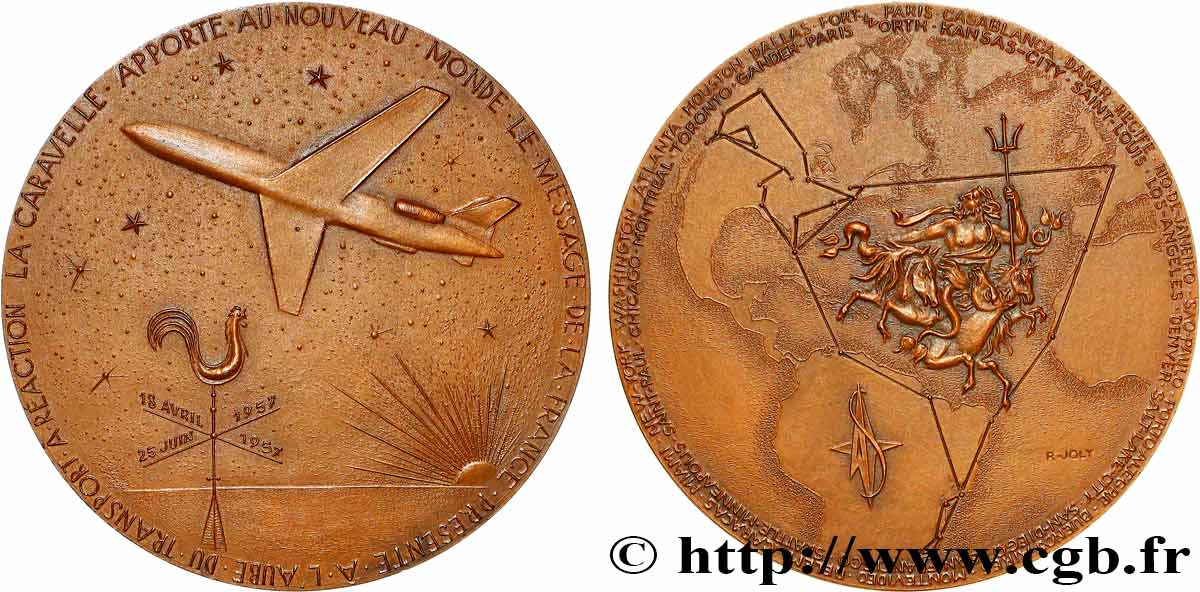
 Cообщить об ошибке
Cообщить об ошибке Распечатать страницу
Распечатать страницу Отправить мой выбор
Отправить мой выбор Задать вопрос
Задать вопрос Consign / sell
Consign / sell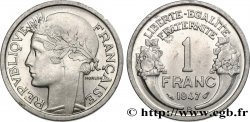
 Информация
Информация


